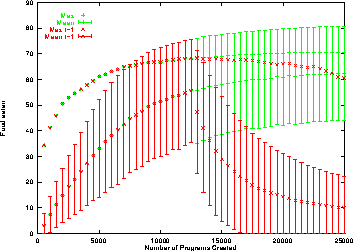
Figure 6: Evolution of maximum and population mean of food eaten. Error bars indicate one standard deviation. Means of 50 runs showing effect of removing fitness selection.
A final 50 runs were conducted in which fitness selection was removed after generation 25 (i.e. these runs are identical to those in Section 5.1 up to generation 25). Of the six runs which found ants that could eat all the food on the Santa Fe trail within 600 movements, four where found before generation 26 and of these three retained such programs until generation 50 while in one case the maximum fitness dropped below 89. In another run a solution was found in generation 41 but no other generations of this run contained solutions.
The evolution of maximum and mean fitness averaged across all 50 runs is given in Figure 6. As expected Figure 6 shows in the absence of fitness selection the fitness of the population quickly falls.

Figure 6:
Evolution of maximum and population mean of food eaten.
Error bars indicate one standard deviation.
Means of 50 runs showing effect of removing fitness selection.
After fitness selection is removed, if the crossover operator is unbiased, we expect the length of programs to fluctuate at random about the lengths of their parents. So the mean length should change little and the spread of lengths should increase. The length restriction means the crossover operator is biased because it must ensure the child it produces does not exceed the length limit. Where an unbiased choice of crossover points would cause the offspring to be too large, the roles of the two parents are reversed and a shorter (and legal) program is produced instead. This bias (which is more important as programs start to approach the length limit) explains the slow fall in program size seen in Figure 7. The spread of programs' lengths can also be seen. The average standard deviation rises from 92.3 in generation 26 to 107.6 at the end of the run.

Figure 7:
Evolution of maximum and population mean program length.
Error bars indicate one standard deviation.
Solid line is the length of the ``best'' program in the population.
Means of 50 runs showing effect of removing fitness selection.